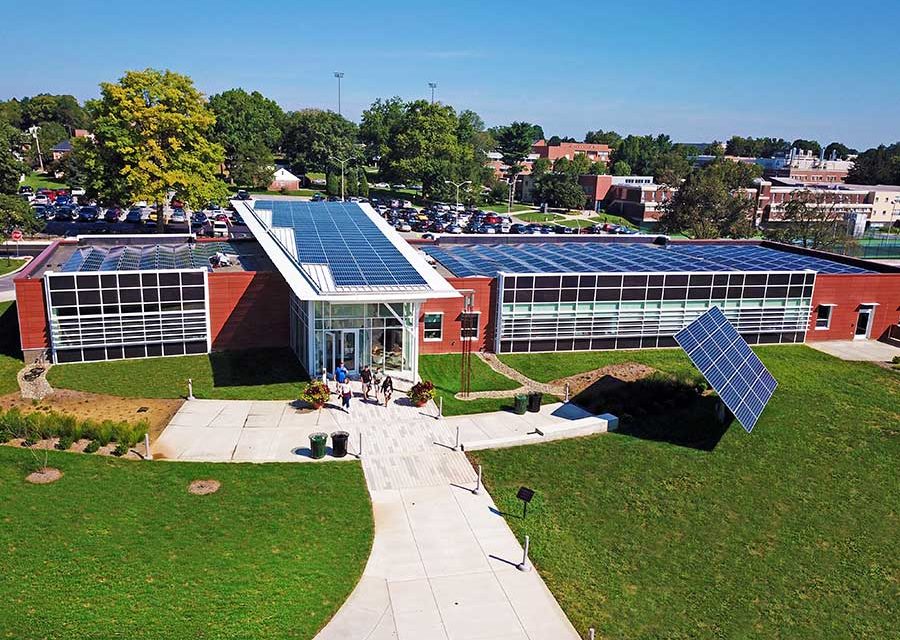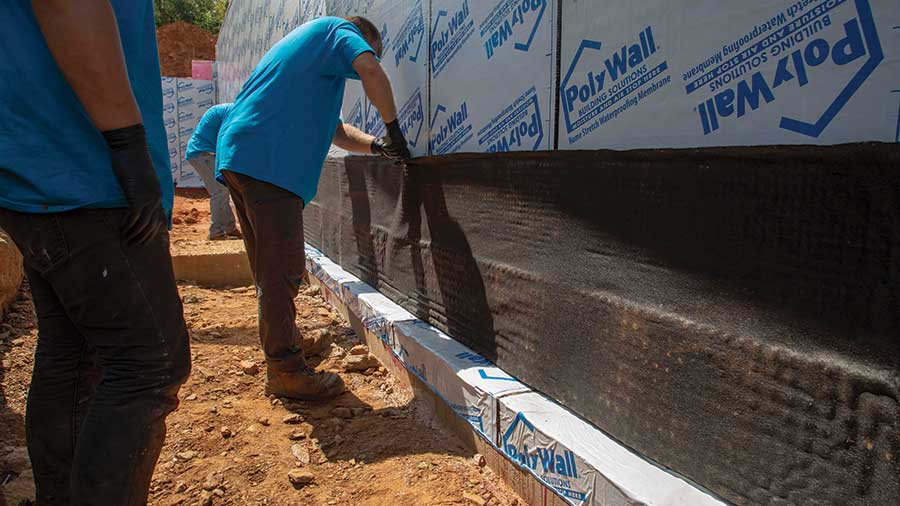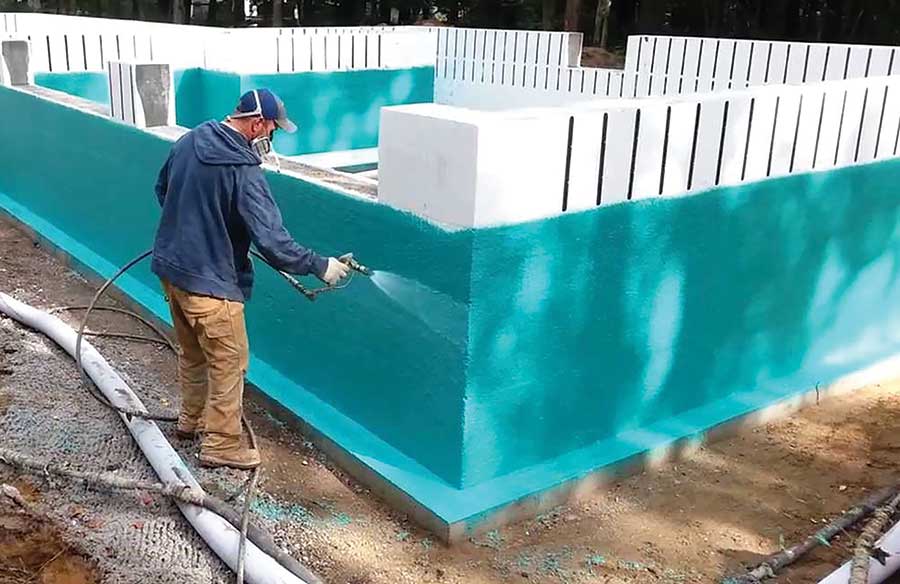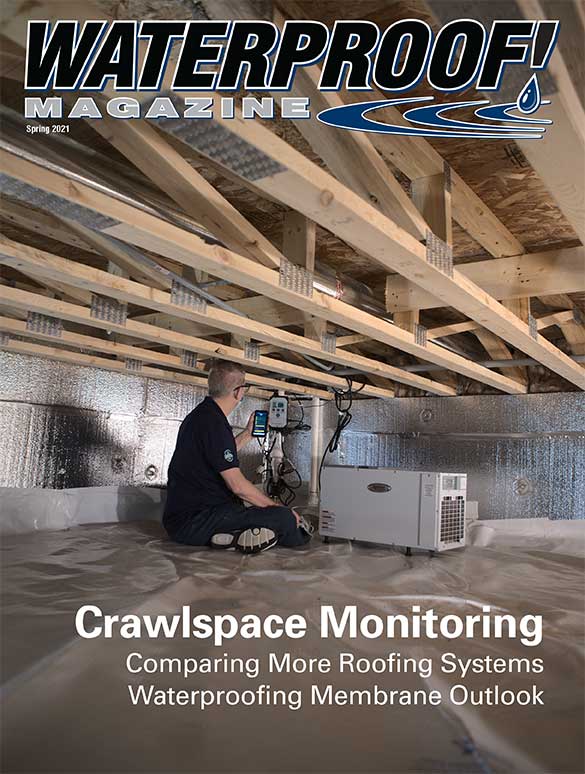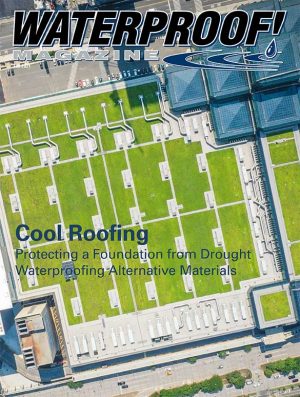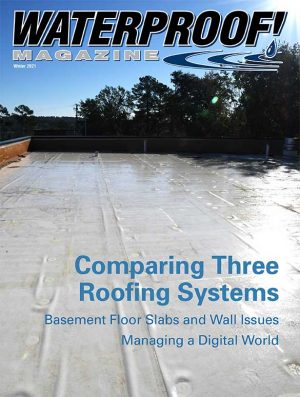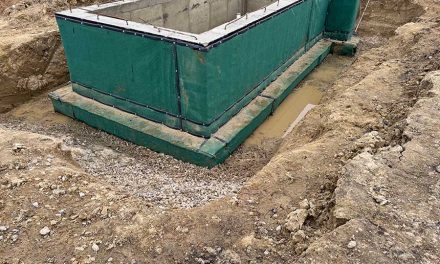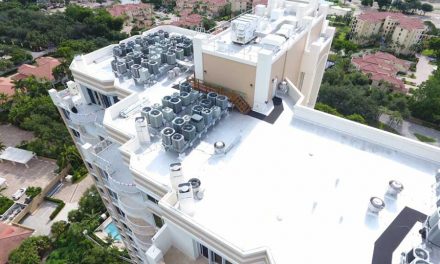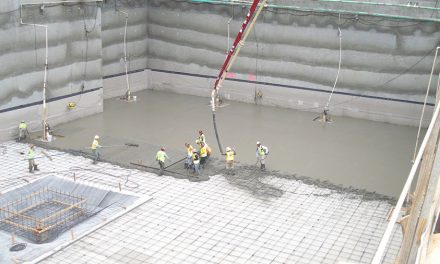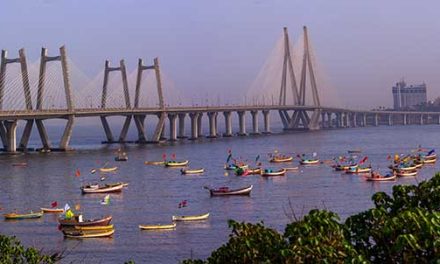From Global Market Insights
The net-zero Lombardo Welcome Center, built with ICFs, at Millersville University in Millersville, Pennsylvania.
The global waterproofing membranes market size is anticipated to cross an astounding $14 billion USD by 2026, driven by the massive expansion of the infrastructure sector worldwide.
Building constructions are an amalgamation of myriad complex components. Construction chemicals play an especially important role in nearly every project, from industrial to residential to commercial, among others. These chemicals are used extensively for the purpose of enhancing concrete quality and strength, water-tightness and protection on structures from degradation due to atmospheric influences. To that end, many construction material manufacturers offer a plethora of solutions geared towards applications such as repair, rehabilitation and waterproofing of the buildings, to name a few.
Waterproofing for buildings is one of the core components of a construction project. Essentially, this treatment protects the construction from the penetration of water, thereby forestalling any potential damage. Studies suggest that nearly 60% of all building damages and defects are caused due to water.
Water seepage is among the primary concerns for the construction industry. Once water enters the construction, it accumulates behind ceilings and walls, which typically have high moisture concentration and dearth of light. In such places, water seepage can create a suitable environment for mildew and mold to thrive.
Over time, this mold and mildew can compromise the structural integrity of the building, as well as trigger potentially hazardous effects on the health of the building’s inhabitants, making it extremely unsafe for the occupants and visitors to the construction.
In order to circumvent this issue, building and homeowners are now turning towards robust waterproofing solutions, with particular focus on the waterproofing membrane market in recent years.
Membranes and Building Waterproofing
Buildings, especially external areas such as balconies, terraces, and roofs, need to undergo proper waterproofing in order to safeguard the structure and other elements from the damaging effects of water. Left unprotected, these elements are vulnerable to water seepage which could create myriad issues that can affect not just the structural integrity but also the building envelope effectiveness.
Flat balconies, roofs, and terraces often have finishes such as screed, ballast, or tiling, which are designed to limit the penetration of surface water into the building’s structure. However, these finishes alone do not possess the ability to prevent water seepage completely, and oftentimes the surface water may remain under the finishing and seep into the structure, if not drained properly. For this reason, waterproofing mem-branes play an integral role in enclosing and protecting the surfaces of the building from potential damage due to surface water.
Waterproofing membranes refer to thin-layered, continuous watertight materials, laid over a surface to prevent the penetration of water. For instance, these membranes are applied either below finished tiles or above the structural slabs of flat terraces to prevent the seepage of surface water.
Waterproofing membranes can be classified as sheet membranes or liquid applied membranes. These membranes can stretch and move according to the contours of the building, making them an ideal solution for long-term leakage protection. Membrane elongation is measured mainly in percentages. To illustrate, a membrane with 150% elongation can stretch up to over 1.5 times its original length, once pulled.
High-rise buildings benefit largely from the application of waterproofing membranes, as they can stretch over any future cracks that may develop. Waterproofing for buildings using polyurethane modified waterproofing membranes, applied in liquid form and covered with a protective plaster later are the best solution for these kinds of constructions.
Waterproofing membranes also demonstrate strong potential in metal and steel-made buildings, as the preferred leak prevention method.
Waterproof membranes work mainly by sealing the building’s surface against substances it comes into contact with, from heat, to water leaks, to chemicals and others. These materials possess several beneficial properties, such as resistance to tear and breakage, as well as the ability to release water into the atmosphere in vapor form, to lengthen the life of the structure. On account of the same, they are widely deployed in construction projects across developed economies such as Europe, where infrastructural development is on an all-time rise.
As per estimates, Germany’s waterproofing membranes market size crossed USD 515 million in 2018.
Waterproofing of Insulated Concrete Form Structures and Their Significance
Amid the gradual shift towards green construction across the globe, the term net-zero is rapidly coming to be perceived as the gold standard. Net-zero structures refer to constructions that use less energy than they generate, thus combining the benefits of an energy-efficient construction with renewable energy sources on-site.
Builders in the modern era are placing growing emphasis on net-zero constructions as they become increasingly cost-effective. One aspect of net-zero construction that is gaining rapid traction over the years is ICF (Insulated Concrete Forms). In essence, ICFs refer to formwork systems for reinforced concrete, developed using thermal insulation that is rigid and can stay in place.
ICFs can be made from EPS (expanded polystyrene) high-density foam, which is left permanently in place, to deliver acoustic and thermal insulation, provide a space for plumbing and electrical wiring, and as a backing for exterior facades and interior gypsum boards.
These interlocking modular units can be dry-stacked, after which they are filled with concrete. They lock together to create a framework or “form” for the building’s structural walls and are considered to be an ideal “one-step assembly” solution.
While ICFs are fabricated predominantly using EPS, some also use XPS (extruded polystyrene) or recycled polystyrene instead. Additive ICF structures deliver insulation of up to R-40, which contributes greatly to their use in net-zero constructions.
ICF-based net-zero structures have already begun to make their mark in the modern construction landscape. To illustrate, Millersville University’s Lombardo Welcome Center is one of the earliest examples of a net-zero success story. The $10 million Lancaster County building generated over 75% more energy than it needed in its first year, allowing the university to enjoy savings of nearly $5,000 a month in energy costs
However, one of the main challenges to ICF constructions, particularly foundation walls, is its waterproofing. ICF waterproofing in general is a difficult endeavor, as the inherent characteristics of an ICF structure are largely inconsistent with the established industry best practices for waterproofing performance in the current market.
Waterproofing of ICF structures differs significantly from conventional waterproofing for buildings. While the placement of a barrier between the structure and the elements is essential in any constriction, in ICF structures, the nature of the barrier itself is of great importance as well.
Owing to the use of EPS and its susceptibility to solvents, only water-based waterproofing membranes are considered to be useful for ICF waterproofing applications. Peel-and-stick membranes also demonstrate promising potential in waterproofing of these structures, by maintaining consistent membrane thickness, bridging and seams or gaps and supporting easier installations and cleanup activities. Σ
To find more in-depth information on ICF waterproofing applications visit www.icfmag.com/2021/01/the-art-and-science-of-waterproofing-icf and www.waterproofmag.com/2020/09/effective-waterproofing-for-icf-structures
Spring 2021 Back Issue
$4.95
Which Is a Better Roofing System: TPO, EPDM, or PVC? Part 2
Crawlspace Monitoring: The why, the how, and the differences
Waterproofing Membranes Outlook
AVAILABLE AS DIGITAL DOWNLOAD ONLY
Description
Description
Which Is a Better Roofing System: TPO, EPDM, or PVC? Part 2
By Joel Lozon
Don’t just leave the decision about roofing to your roofing contractor. This is the second part of our attempt to answer questions about roofing systems using TPO, EPDM, and PVC, and discern the basic differences between the three systems
Crawlspace Monitoring: The why, the how, and the differences
By Vanessa Salvia
Monitoring what goes on in a crawlspace or basement is critical for a few reasons. Many people don’t regularly visit their basements, and may only go into the crawl space a few times a year. If there is a problem with the sump pump equipment, or the temperature and/or humidity level, it could result in catastrophic damage to your belongings.
Waterproofing Membranes Outlook
By Global Market Insights
The global waterproofing membranes market size is anticipated to cross an astounding $14 billion USD by 2026, driven by the massive expansion of the infrastructure sector worldwide. Studies suggest that nearly 60% of all building damages and defects are caused due to water.
Additional Info
Additional information
| Magazine Format | Digital Download Magazine, Print Mailed Magazine |
|---|

